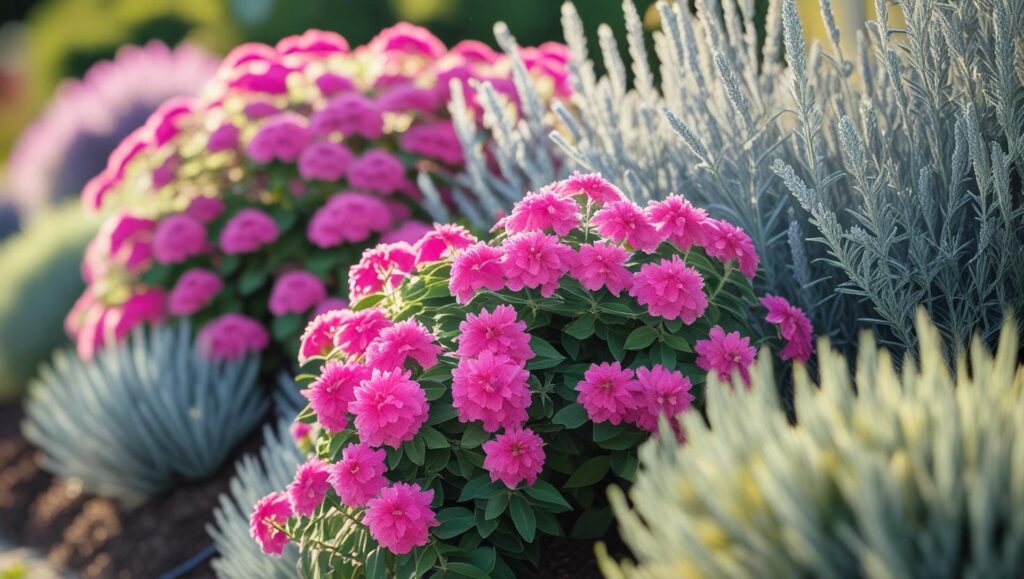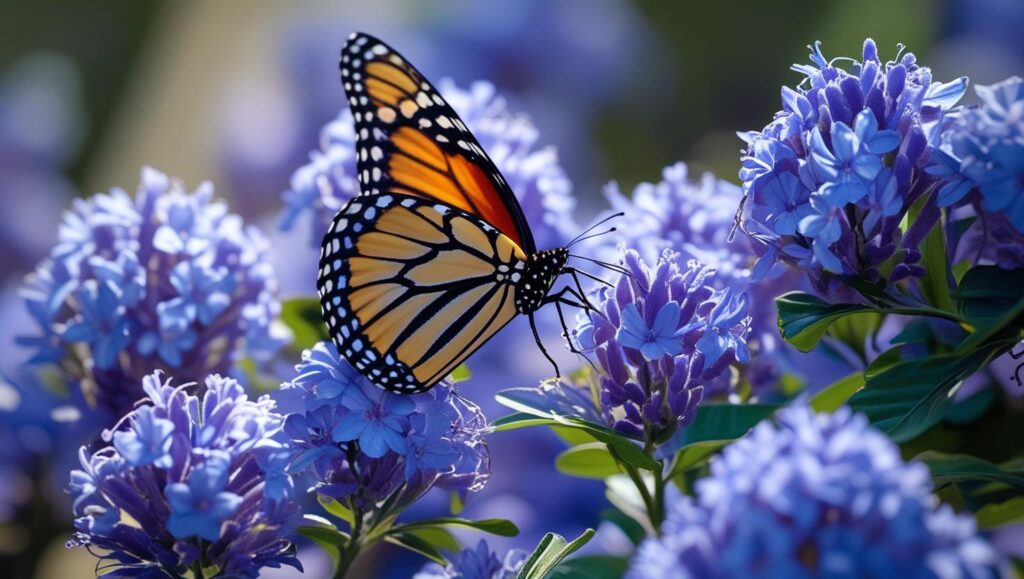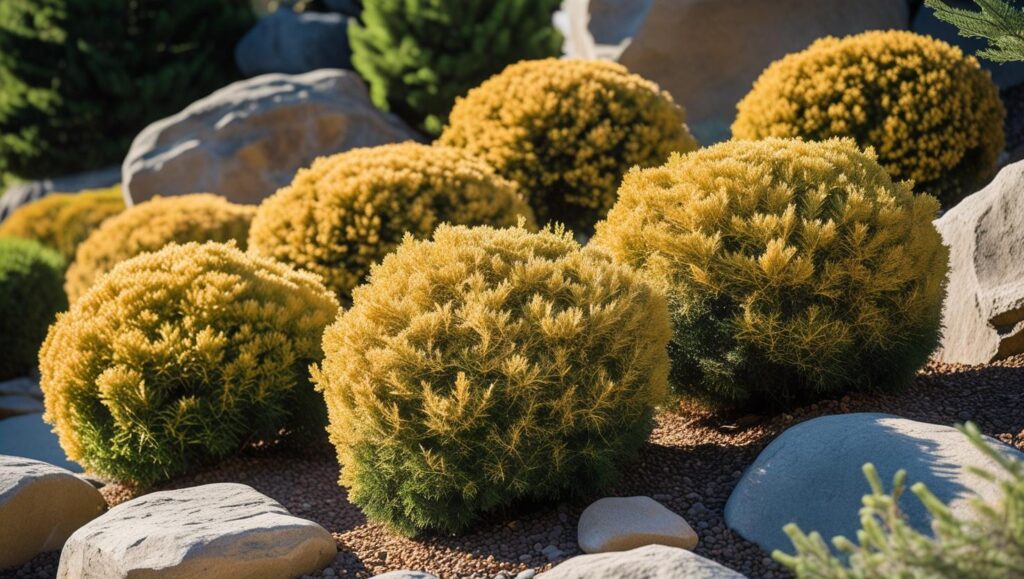For gardeners seeking to enhance their landscapes with minimal upkeep, sun-loving dwarf shrubs offer a perfect solution. These compact plants provide vibrant color, structural interest, and multi-season appeal without the demanding space requirements of their larger counterparts. From brilliant blooms to striking foliage, a curated selection of seven dwarf shrubs stands out for their resilience, beauty, and suitability for borders, beds, and container gardens.

Key Selections for Sunny Spaces
| Shrub Type | Key Feature | Mature Size (H x W) | USDA Hardiness Zones |
| Dwarf Japanese Spirea | Long-lasting summer blooms | 2-3 ft x 2-3 ft | 3-8 |
| Dwarf Butterfly Bush | Attracts pollinators | 2-3 ft x 2-3 ft | 5-9 |
| Dwarf Potentilla | Extremely hardy and long-blooming | 2-3 ft x 2-3 ft | 2-7 |
| English Lavender | Fragrant flowers and foliage | 1-2 ft x 1-2 ft | 5-9 |
| ‘Anna’s Magic Ball’ Arborvitae | Year-round golden foliage | 1-1.5 ft x 1-1.5 ft | 3-7 |
| Dwarf Globe Blue Spruce | Striking blue, year-round color | 3-5 ft x 5-6 ft | 2-8 |
| ‘Little Lime’ Hydrangea | Large blooms on a compact plant | 3-5 ft x 3-5 ft | 3-8 |
For homeowners and landscape designers, the challenge often lies in finding plants that deliver high visual impact with low maintenance requirements. Sun-drenched borders and beds, in particular, demand resilient species that can withstand direct light and, in many cases, periods of drought. The following seven dwarf shrubs have been selected for their proven performance in these conditions, offering a range of colors, textures, and forms.
1. Dwarf Japanese Spirea (Spiraea japonica)
A staple in temperate landscapes, Dwarf Japanese Spirea is celebrated for its clusters of pink or white flowers that appear in late spring and can re-bloom through summer. Cultivars like ‘Little Princess’ and ‘Goldflame’ are particularly valued for their compact, mounded habit.
“Spiraea japonica is a go-to for designers because of its reliability and multi-season interest,” notes a horticulturalist from the University of Minnesota Extension. “The ‘Goldflame’ variety, for instance, offers new growth that emerges reddish orange in spring, matures to a yellowish-green, and takes on a copper-orange hue in the fall, providing color even when not in bloom.”
These shrubs thrive in full sun, which encourages the most prolific flowering and the most vibrant foliage colors. They are adaptable to a wide range of soils but perform best in well-drained loam. An annual shearing after the first flush of flowers can encourage a second bloom and maintain a tidy shape.
2. Dwarf Butterfly Bush (Buddleja ‘Blue Chip’)
Traditional butterfly bushes can become large and unruly, but the advent of sterile or near-sterile dwarf cultivars has revolutionized their use in smaller gardens. The Lo & Behold® ‘Blue Chip’ is a standout, growing to a manageable 2-3 feet tall and wide. It produces a profusion of fragrant, lavender-blue flower spikes from mid-summer until the first frost.
According to researchers at North Carolina State University, where this series was developed, the goal was to create a non-invasive butterfly bush that offered continuous blooms. “’Blue Chip’ has very low seed set, which addresses the invasiveness concerns of older varieties,” they state. This makes it an environmentally responsible choice for attracting pollinators like butterflies and hummingbirds. It is highly drought-tolerant once established and deer-resistant.

3. Dwarf Potentilla (Potentilla fruticosa)
For gardeners in colder climates, Potentilla, or Shrubby Cinquefoil, is an exceptionally hardy choice. This tough, deciduous shrub is native to the Northern Hemisphere and can survive in USDA Zone 2. Modern cultivars like the Happy Face® series offer larger flowers and a more compact form than the species.
They produce cheerful, buttercup-like flowers in shades of yellow, white, or pink throughout a long season, typically from late spring until the first frost. “Potentilla is valued for its incredible toughness and exceptionally long bloom period,” says a representative from Proven Winners ColorChoice Shrubs. “It thrives on neglect, tolerating poor soils and drought, making it one of the lowest-maintenance shrubs available for sunny spots.” Its fine-textured, deep green foliage adds a soft texture to garden beds.
4. English Lavender (Lavandula angustifolia ‘Munstead’)
No sun-loving garden is complete without the classic fragrance and beauty of lavender. ‘Munstead’ is a popular dwarf variety of English lavender known for its compact habit and profusion of dark purple-blue flower spikes in early to mid-summer. Reaching only 12-18 inches in height, it is perfect for lining walkways or the front of a border.
Experts at the Royal Horticultural Society (RHS) emphasize the need for excellent drainage for lavender to thrive. “The biggest mistake with lavender is overwatering or planting in heavy soil,” an RHS expert explains. “It is a Mediterranean plant that requires full sun and gritty, well-drained, slightly alkaline soil to flourish.” The silvery-gray foliage is aromatic and provides year-round interest.
5. ‘Anna’s Magic Ball’ Arborvitae (Thuja occidentalis)
For year-round color without relying on flowers, ‘Anna’s Magic Ball’ Arborvitae is an exceptional choice. This dwarf evergreen conifer maintains a tight, globe-like shape and cheerful golden-yellow foliage that resists sun scorch. Growing to a mere 10-18 inches in height and width, it functions as a living sculpture in the garden.
“Its bright color, compact form, and the fact that it holds its color through winter make it a fantastic alternative to boxwood,” a specialist from Van Vloten Nursery, the plant’s developer, has noted. It requires no pruning to maintain its shape and is extremely cold-hardy. This makes it a valuable plant for adding structure and a pop of color to foundation plantings, rock gardens, or container displays.

6. Dwarf Globe Blue Spruce (Picea pungens ‘Glauca Globosa’)
Another outstanding evergreen for year-round structure is the Dwarf Globe Blue Spruce. This slow-growing conifer is prized for its intensely silver-blue needles. While it can eventually reach 3-5 feet in height and 5-6 feet in width, its slow growth rate means it remains a compact feature for many years.
It initially grows in a somewhat flattened, globular shape, becoming more broadly conical with age. According to Monrovia, a leading plant nursery, “This charming, globe-shaped evergreen is densely branched and holds its vibrant blue color all year, providing a unique accent for a special spot in the garden.” It is extremely hardy, deer-resistant, and tolerant of urban pollution, making it a versatile choice for a variety of sunny, well-drained locations.
7. ‘Little Lime’ Hydrangea (Hydrangea paniculata)
For those who love the classic look of hydrangeas but lack the space, ‘Little Lime’ is a game-changer. A dwarf version of the popular ‘Limelight’ hydrangea, it offers the same large, football-shaped blooms on a much smaller frame, typically 3-5 feet tall and wide. The flowers emerge a soft lime-green in mid-summer, transition to a creamy white, and then take on shades of pink and burgundy in the fall.
“Because it blooms on new wood, it is a very reliable bloomer, even in colder climates where other hydrangeas might fail,” explains a horticulturist from Southern Living. This means that a late frost won’t jeopardize the summer’s flower show. It is one of the most sun-tolerant hydrangeas and is relatively low-maintenance, requiring only a light pruning in late winter or early spring.
These seven sun-loving dwarf shrubs provide a toolbox of options for creating vibrant, resilient, and low-maintenance gardens. By selecting the right plant for the right place, gardeners can achieve year-round beauty in their sunniest borders and beds. The key to their success lies in their compact genetics, which offer the beauty of their larger relatives without the demanding upkeep.
7 Colorful Shade-Loving Perennials to Brighten Up Your Garden Spaces
9 Unique Around-Tree Flower Bed Ideas to Transform Your Garden Design
